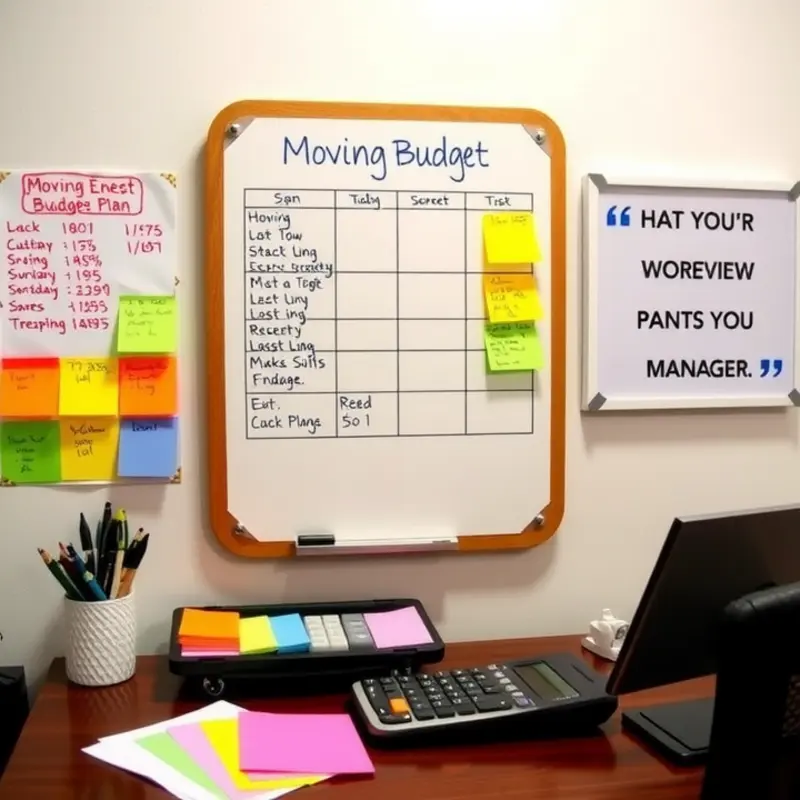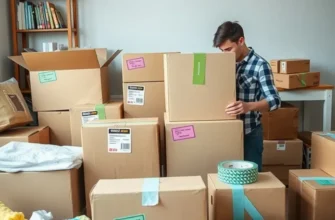Moving into a new home is like starting a new chapter in your life, filled with promise, excitement, and—oh yes—stress (hello, budget!). Whether you’re a fresh-faced graduate, a dynamic couple, or a family eager for a change, understanding how to establish and stick to a moving budget can turn this chaotic scramble into a manageable task. From rent deposits to moving trucks, hidden costs can sneak up on you like that one mystery box you never unpacked from college. Instead of tossing your savings into the abyss of ‘probably necessary’ expenses, let’s break down those costs into digestible pieces. Grab your notepad, channel your inner budget guru, and let’s uncover how you can keep your finances in check while embarking on your new adventure. Ready to find out how to make your move less costly and more exciting? Let’s dive in and create a budget that sees you through the chaos and into your new happy place.
Understanding the True Cost of Moving

Moving can feel like orchestrating a grand performance, with unexpected costs sneaking into your carefully composed budget. For young renters, especially, understanding the full gamut of moving expenses is key to keeping both your wallet and wits intact.
First on the list is the security deposit. Many landlords require a one-time fee, often equivalent to one month’s rent. It’s like paying for a ticket to your new life that you’ll hopefully get back, assuming you haven’t accidentally repainted the living room in neon orange.
After securing your new abode comes the moving crew—or your trusty friends, lured by the promise of free pizza. If you’re hiring professionals, their fees can range widely depending on distance and amount of stuff. Weekend rates can also inflate costs. Alternatively, if you’re roping in friends, don’t underestimate the expense of feeding them.
Next, consider the packing materials. Cardboard boxes might seem mundane, but buying them new can add up quickly. Check with local businesses for free boxes, but be prepared to shell out for sturdy tape and bubble wrap unless you want your best dishware to turn into a jigsaw puzzle.
A sneaky cost is temporary accommodation and storage. If there’s a gap between leases, you might need a hotel room. For those downsizing, a storage unit might be necessary to hold onto your vintage comic book collection.
Utility transfer fees are another small but important cost. Many utility providers charge a fee to switch services, not to mention the final bill at your old place. A well-timed shutdown or disconnection could save some money.
Let’s not forget the communal expenses in shared housing situations. With multiple people moving in, synchronizing things like internet installation and shared furniture is crucial. This might save both money and strife over who gets the green couch.
Unexpected costs can also crop up post-move. Settling into a new neighborhood might mean investing in items like blackout curtains if you find out your bedroom gets too much sun—at 5 AM. And if you’re in an unfamiliar city, consider rental tips as a way to ease the financial transition.
Finally, sprinkle in a dash of humor and resourcefulness. Reframe any moving surprises as opportunities to declutter or justify indulging in a new furniture piece. While the initial cost might sting, think of it as contributing to the aesthetic of your new home.
By planning comprehensively and thinking creatively, your move doesn’t have to be a financial tightrope walk. Instead, it becomes a well-budgeted adventure, complete with a fresh start in your new digs.
Crafting Your Budget: Tips and Tricks

Creating a moving budget doesn’t have to be a stressful ordeal, or one that leaves you considering a life of minimalist, floor-mat living. It starts with knowing your priorities—if you’ve ever had to categorize your life into urgent and not-so-much, you’ll know what I mean. Let’s walk through some steps to make sure you can move to your new home without accidentally spending next month’s rent.
Identify Your Priorities
Before you even start listing costs, determine what’s non-negotiable in your move. Are you hiring a moving service, or is this a DIY operation with friends you bribed with pizza and soda? This decision will carve your path towards budget crafting. Labor costs carried by professionals are higher, but paid in muscle-saving sweat equity. If going professional, research to get quotes from several moving companies. You’d be surprised how varied rates can be.
List and Categorize Expenses
Your next step is to list all possible expenses. Break these down into categories such as transportation, supplies, and utility setup. This way, your budget isn’t just a loose collection of numbers but a structured flow of expected outgoings. Don’t forget the small things—boxes, bubble wrap, tape—that can sneak up on you in totals that rival paint night at a fancy bar.
Reserve Funds for Unexpected Costs
Ever seen a couch that seemed to expand during the move, needing four people instead of two? Reserve about 10% of your total move budget as a buffer for unforeseen costs. This could be anything from securing a parking permit for moving day to fixing minor repair issues at your current place. The cushion is not a luxury—it’s a small security that saves you from future headaches.
Streamline and Prioritize Utilities
Setting up and shutting down utilities can include fees you didn’t know existed. Schedule disconnects for a day after you leave your old place, just in case your move takes longer. Prioritize the installation of essential utilities at your new home. Unless you fancy living light with candles, make sure electricity and water are at the top of your setup list. For further tips on organizing smaller living spaces and making the most of what you have, check out these creative renter storage solutions.
Use Apps and Tools to Stay on Top
Embrace technology to keep your budget in check. Apps can help you track spending with notifications to keep you from going overboard at every new store near your future apartment. Samples of budgeting templates are valuable; they give structure without making it feel like another form of torture.
Seek Family and Friends for Input
Lastly, tap into your network for advice. Friends and family who recently moved can offer insights that a web search won’t reveal. Experiences from others—those “I wish I’d known” moments—can be gold in managing your budget smartly.
Paying attention to these elements ensures your move is less chaotic and more about turning a new place into a home. Each dollar saved is a dollar that could be a future curtains fund, or the fund for that ‘something-sparkly’ in your next decor piece. Your budget isn’t just a financial plan; it’s the foundation of your new chapter.
Final words
Budgeting for a move may not feel like the most glamorous task, but it’s crucial for a smooth transition into your new home. From understanding the costs to creating a foolproof plan, you now have the tools to confidently tackle the financial side of moving. Remember, with a bit of planning and humor, you can turn this logistical headache into a fun challenge. So, go ahead, grab that calculator, and start your new adventure without financial regrets. You’ve got this!









